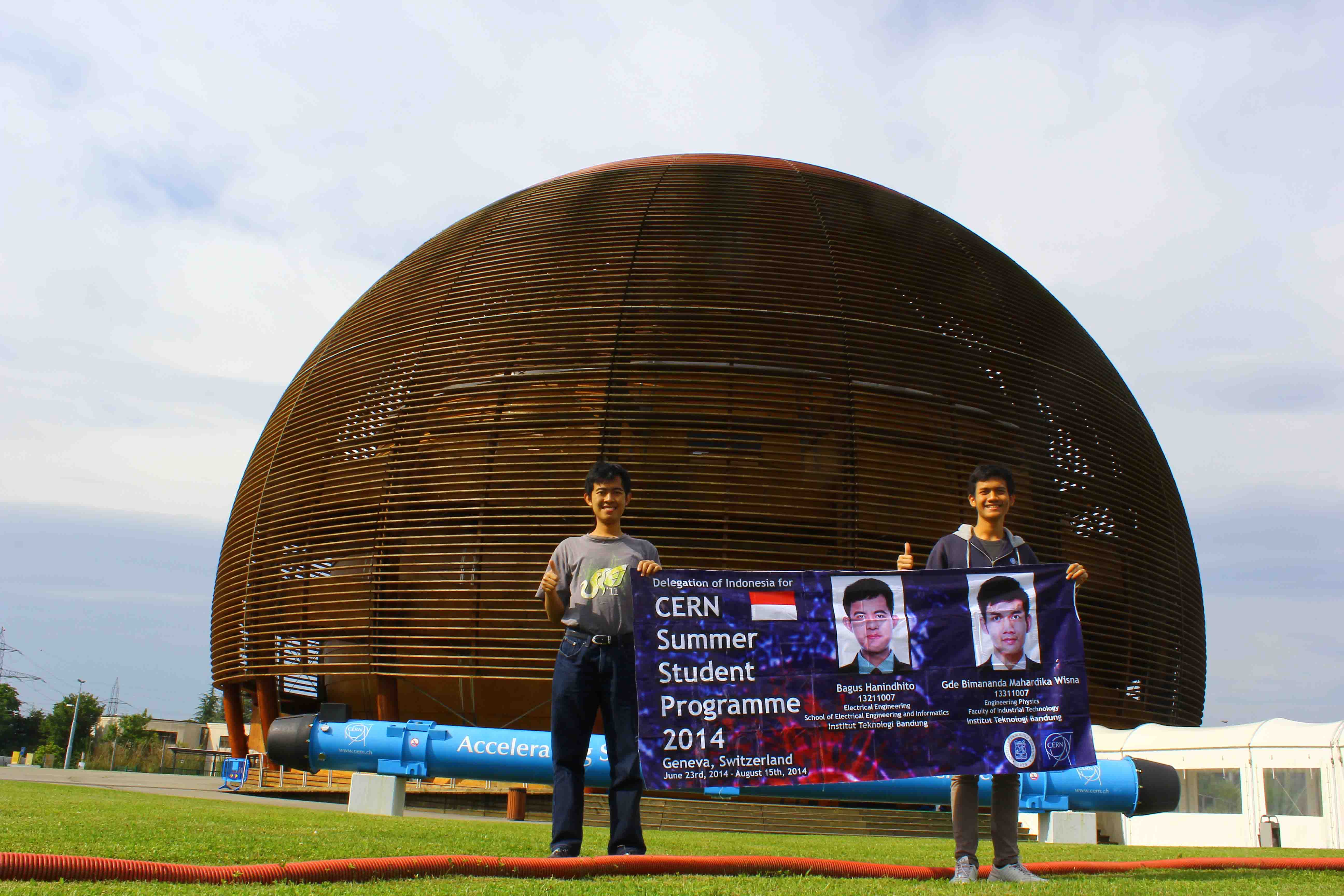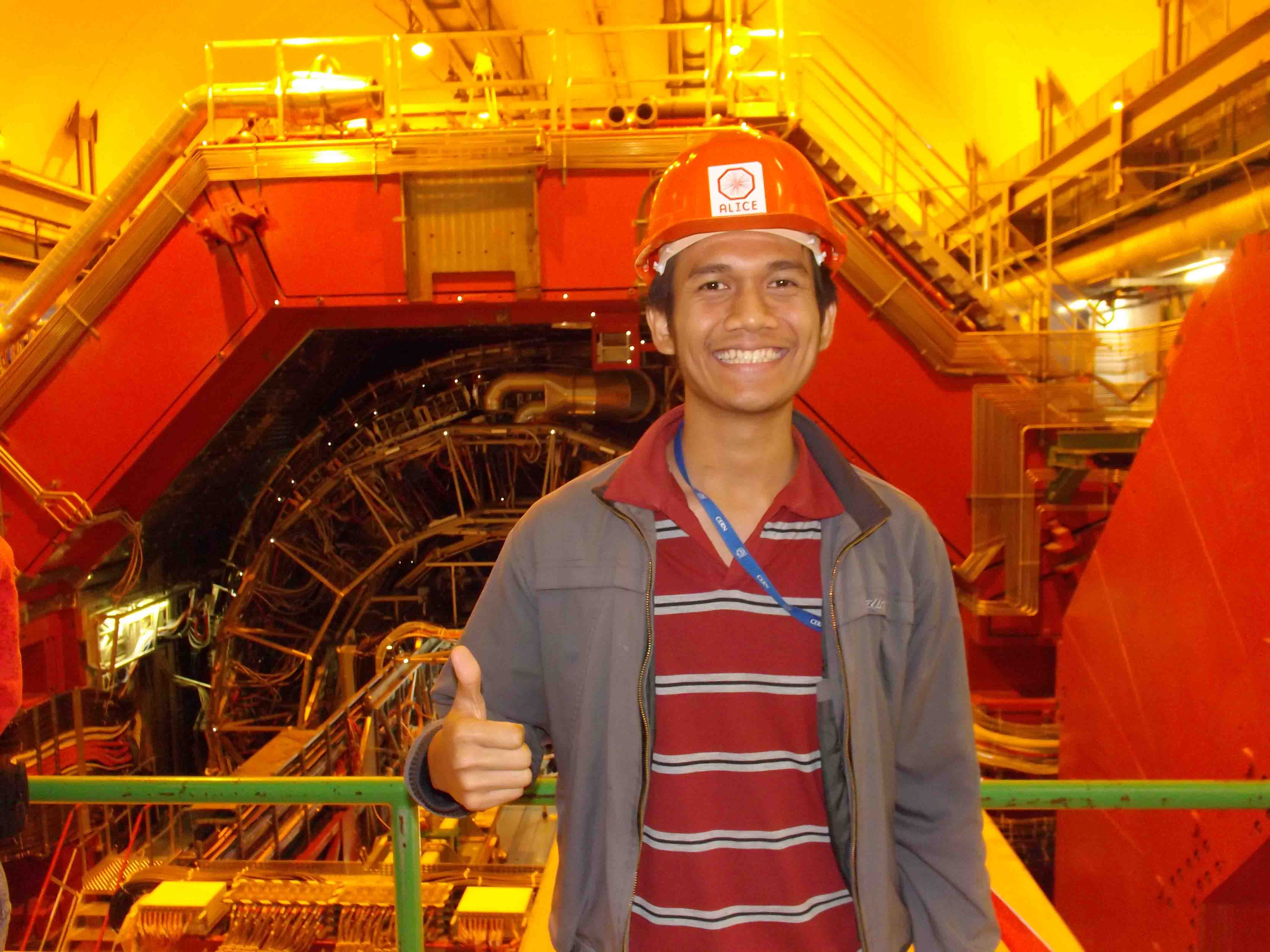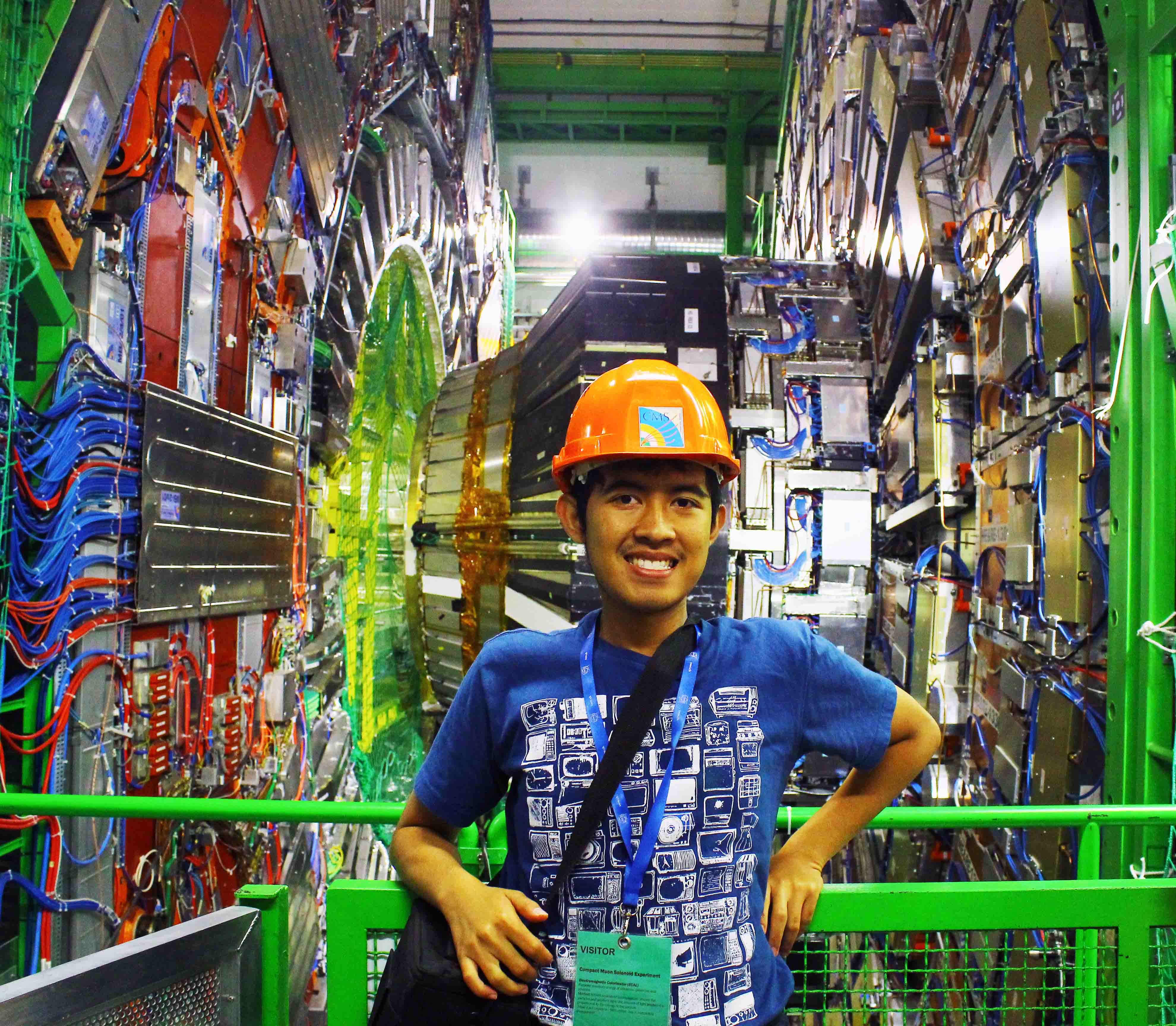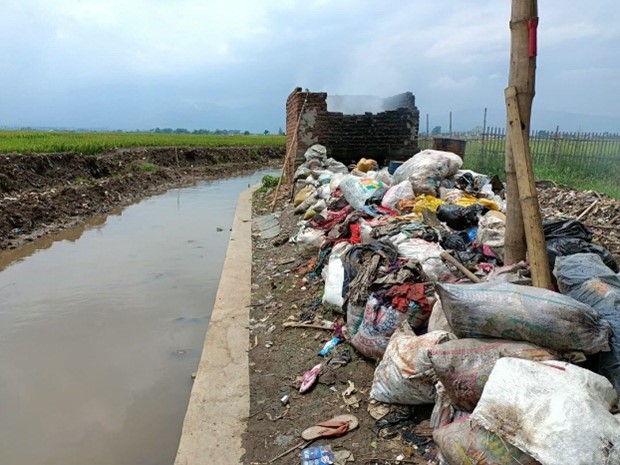Becoming A World-Class Researcher in CERN Summer Student Programme 2014
By Ahmad Furqan Hala
Editor Ahmad Furqan Hala

 Gde Bimananda Mahardika Wina (Engineering Physics 2011) and Bagus Hanindhito (ELectrical Engineering 2011) were both the representatives of Indonesia in CERN Summer Student Programme 2014 in Geneva, Switzerland. This program was run by Organisation Europeenne pour la Recherche Nucleaire (CERN). CERN is a body which run the world's biggest particle physics laboratorium. From 11.000 bright students that apply for this program, only 250 lucky students were chosen and given chance to be the world's brightest researcher. Bima and Bagus as Indonesian representatives in this program, were funded by CERN and ITB together.
Gde Bimananda Mahardika Wina (Engineering Physics 2011) and Bagus Hanindhito (ELectrical Engineering 2011) were both the representatives of Indonesia in CERN Summer Student Programme 2014 in Geneva, Switzerland. This program was run by Organisation Europeenne pour la Recherche Nucleaire (CERN). CERN is a body which run the world's biggest particle physics laboratorium. From 11.000 bright students that apply for this program, only 250 lucky students were chosen and given chance to be the world's brightest researcher. Bima and Bagus as Indonesian representatives in this program, were funded by CERN and ITB together.
In CERN Summer Student Programme 2014, Bima and Bagus were being taught by brightest experts in particle physics, accelerator, and detector field. They also got chance to visit research centre and laboratorium in CERN, such as underground detector ATLAS, ALICE, CMS, and LHCb, superconductor magnetic testing facility, antimatter laboratorium, also to access the computer server and data centre there. Besides, they were also given a project which let them experience being a world-class researcher in CERN.
 Bima, who has engineering physics basic, said he wanted to explore more about electronic material. And to facilitate it, he got a project to study detector that can be used to identify huge-momentum particles. This detector works by detecting Foton Cherenkov that these particles generated. When this foton passes through a thin medium, for example Cesium Iodide (CsI), foton that moves faster than light velocity in medium can be detected because of the photoelectric effect. In this project, Bima need to study how to make the thin medium using Evaporation Chamber, how to do measurement using Measurement Chamber, and how to analyze the quantum efficiency from the thin Cesium Iodide film.
Bima, who has engineering physics basic, said he wanted to explore more about electronic material. And to facilitate it, he got a project to study detector that can be used to identify huge-momentum particles. This detector works by detecting Foton Cherenkov that these particles generated. When this foton passes through a thin medium, for example Cesium Iodide (CsI), foton that moves faster than light velocity in medium can be detected because of the photoelectric effect. In this project, Bima need to study how to make the thin medium using Evaporation Chamber, how to do measurement using Measurement Chamber, and how to analyze the quantum efficiency from the thin Cesium Iodide film.
In another case, Bagus who wanted to explore more about computer engineering and very large scale integrated circuit got a project to study a hi-speed data acquisition system. This system was made specifically by CERN to be installed and used for the next experiment after the Large Hadron Collider finished the first Long Shutdown period. Bagus also need to do some testing to ReadOutDriver and BackofCrate module. These two modules have the same main component Field Programmable Gate Array (FPGA) and Digital Signal Processor (DSP), which is very fit to the basic study that Bagus had studied before in Electrical Engineering ITB. Furthermore, Bagus also needs to design an easy-to-use but comprehensive automatic testing system.
 In the end, Bima and Bagus hoped that in the future there would be more Indonesian students that would involve and participate more in world-class research, such as CERN. One way to do that is by participating in CERN program. "This is an amazing opportunity and experience to study in CERN, to interact with other amazing people inside, and to visit Europe and see another side of world", Bima said spiritfully. "The eight weeks of research is unforgettable, full of new experience and knowledges. It was very fun to feel the daily life as a researcher in world's biggest particle physics laboratorium, to ineract with amazing people all over the world, and being Indonesian representatives in International community", Bagus added.
In the end, Bima and Bagus hoped that in the future there would be more Indonesian students that would involve and participate more in world-class research, such as CERN. One way to do that is by participating in CERN program. "This is an amazing opportunity and experience to study in CERN, to interact with other amazing people inside, and to visit Europe and see another side of world", Bima said spiritfully. "The eight weeks of research is unforgettable, full of new experience and knowledges. It was very fun to feel the daily life as a researcher in world's biggest particle physics laboratorium, to ineract with amazing people all over the world, and being Indonesian representatives in International community", Bagus added.
 Bima, who has engineering physics basic, said he wanted to explore more about electronic material. And to facilitate it, he got a project to study detector that can be used to identify huge-momentum particles. This detector works by detecting Foton Cherenkov that these particles generated. When this foton passes through a thin medium, for example Cesium Iodide (CsI), foton that moves faster than light velocity in medium can be detected because of the photoelectric effect. In this project, Bima need to study how to make the thin medium using Evaporation Chamber, how to do measurement using Measurement Chamber, and how to analyze the quantum efficiency from the thin Cesium Iodide film.
Bima, who has engineering physics basic, said he wanted to explore more about electronic material. And to facilitate it, he got a project to study detector that can be used to identify huge-momentum particles. This detector works by detecting Foton Cherenkov that these particles generated. When this foton passes through a thin medium, for example Cesium Iodide (CsI), foton that moves faster than light velocity in medium can be detected because of the photoelectric effect. In this project, Bima need to study how to make the thin medium using Evaporation Chamber, how to do measurement using Measurement Chamber, and how to analyze the quantum efficiency from the thin Cesium Iodide film.In another case, Bagus who wanted to explore more about computer engineering and very large scale integrated circuit got a project to study a hi-speed data acquisition system. This system was made specifically by CERN to be installed and used for the next experiment after the Large Hadron Collider finished the first Long Shutdown period. Bagus also need to do some testing to ReadOutDriver and BackofCrate module. These two modules have the same main component Field Programmable Gate Array (FPGA) and Digital Signal Processor (DSP), which is very fit to the basic study that Bagus had studied before in Electrical Engineering ITB. Furthermore, Bagus also needs to design an easy-to-use but comprehensive automatic testing system.
 In the end, Bima and Bagus hoped that in the future there would be more Indonesian students that would involve and participate more in world-class research, such as CERN. One way to do that is by participating in CERN program. "This is an amazing opportunity and experience to study in CERN, to interact with other amazing people inside, and to visit Europe and see another side of world", Bima said spiritfully. "The eight weeks of research is unforgettable, full of new experience and knowledges. It was very fun to feel the daily life as a researcher in world's biggest particle physics laboratorium, to ineract with amazing people all over the world, and being Indonesian representatives in International community", Bagus added.
In the end, Bima and Bagus hoped that in the future there would be more Indonesian students that would involve and participate more in world-class research, such as CERN. One way to do that is by participating in CERN program. "This is an amazing opportunity and experience to study in CERN, to interact with other amazing people inside, and to visit Europe and see another side of world", Bima said spiritfully. "The eight weeks of research is unforgettable, full of new experience and knowledges. It was very fun to feel the daily life as a researcher in world's biggest particle physics laboratorium, to ineract with amazing people all over the world, and being Indonesian representatives in International community", Bagus added. 
.jpg)
.jpg)
.jpg)
.jpg)
.jpg)

